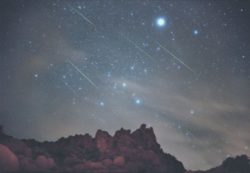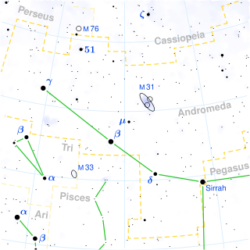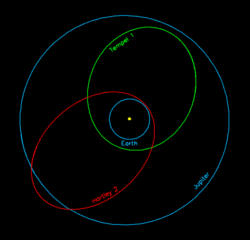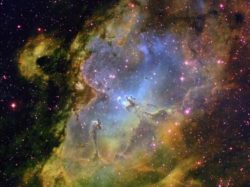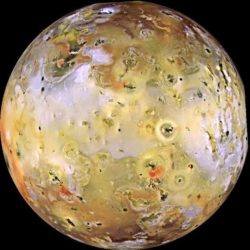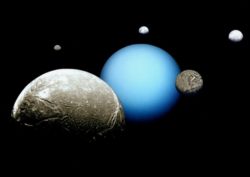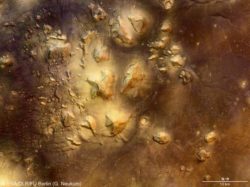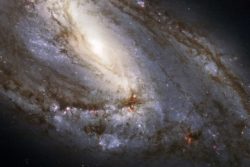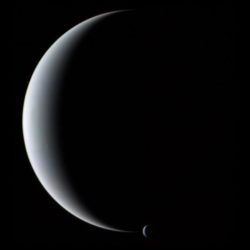Astronomy Picture of the Week – Leonid Meteor Shower
Today is the peak of the Leonid meteor shower. It is one of the best meteor showers to watch because it produces an average of 40 meteors per hour during the peak. All meteors seem to come from the Leo constellation, hence it’s name. This picture features a few meteors from the 2001 Leonid meteor shower streaking over Joshua Tree National Park in California, USA. Image credit & copyright: Wally Pacholka (Astropics) & Tony Hallas (Astrophoto) Unfortunately for me the weather is really bad where I live: it is really cloudy with intermittent rain. So I hope some of you had better luck!
Andromeda Constellation
Andromeda is a constellation in the northern sky. It was one of the 48 constellations listed by the 2nd century astronomer Ptolemy, and it remains one of the 88 modern constellations today. The Andromeda Galaxy is named after the constellation, as it appears within its boundaries.
Hartley 2 Comet
Comet Hartley 2 has made it to the news recently: first because of the comet's flyby near Earth and then due to it being visited by the Deep Impact spacecraft.
Astronomy Picture of the Week – Eagle Nebula
From afar, this nebula looks like an eagle, but a closer look however reveals the bright region is actually a window into the center of a larger dark shell of dust, where a whole cluster of new stars is being formed. The Eagle emission nebula, also known as M16 or NGC 6611, lies about 6500 light years away towards the Serpens constellation and spans about 20 light-years. Image credit: T. A. Rector & B. A. Wolpa, NOAO, AURA
Astronomy Picture of the Week – Solar Eruption
This is a fairly old picture of the Sun since it has been taken on September 14, 1997 by the space-based SOHO observatory. It represents a massive solar eruption. Such a phenomenon occurs when magnetic fields arching from the solar surface twist and trap ionized gas, suspending it in huge looping structures, often expelling it into space. Occasionally that huge amount of solar plasma is ejected in the direction of Earth.
Astronomy Picture of the Week – Venus: Earth’s Cloudy Twin
Discover Venus, Earth's sister planet, in this captivating image by Galileo spacecraft. Learn about its extreme conditions and unmatched brilliance in the sky.
Astronomy Picture of the Week – The Copernicus Crater
Copernicus is one of the largest lunar impact craters on the visible hemisphere of the Moon. It was named after the Polish astronomer Nicolaus Copernicus. The crater is estimated to have formed about 800 million years ago during the Copernican period of lunar history, which was named after the crater. Copernicus is visible using binoculars, and is located slightly northwest of the center of the nearside, in eastern Oceanus Procellarum. The crater has a diameter of 93 kilometers and a maximum depth of 3.8 kilometers. Copernicus also has a dozen satellite craters ranging between 3 and 7 kilometers in diameter. By convention they share the name of the main crater…
Astronomy Picture of the Week – Io Moon Of Jupiter
Io is the most volcanically active body in the solar system. It is the innermost of Jupiter's four major moons also known as the Galilean moons, named after their discoverer. Io's surface is constantly under construction. The volcanic eruptions quickly reshape every part of the moon's crust, so that a map of Io wouldn't stay accurate for quite long.
Astronomy Picture of the Week – Planet Uranus with Moons
This is a photo montage of Uranus and five of it's largest moons. The photos were taken separately by the Voyager 2 spacecraft. The moons, from largest to smallest as they appear here, are Ariel, Miranda, Titania, Oberon and Umbriel. When Voyager 2 visited the planet, it discovered 10 new smaller moons and took close-up pictures of its ring system.
Astronomy Picture of the Week – Stone Mesas of the Cydonia Region on Mars
This photo of the unusual stone mesas of the Cydonia region on Mars was taken by the robotic spacecraft called Mars Express. It shows an area about 90 kilometers wide. What most people don't know is that the region in the far lower right of this photo is the same region in which the Viking orbiter saw a human face in 1976.
Astronomy Picture of the Week – Unusual Spiral Galaxy M66
This is a photo of an unusual spiral galaxy called M66, or NGC 3627, taken by the Hubble Telescope. It lies about 35 million light years from Earth and it spans 100,000 light years. At a first glance, this galaxy looks familiar. Why? Well, because it is similar to our own galaxy, the Milky Way. Both galaxies are spirals. However, what’s really unusual about this one is that it is asymmetric. Usually the force of gravity of a mega black hole (or group of mega black holes) attracts all the stars and interstellar gas in a symmetric pattern. If the mega black hole is not originally in the center of…
Astronomy Picture of the Week – Crescent Neptune and Triton
This is a photo of a crescent Neptune and its largest moon Triton taken by the Voyager 2 probe in 1989. It is unique because such a picture could not be taken from Earth since Neptune never shows a crescent phase to sunward Earth.

